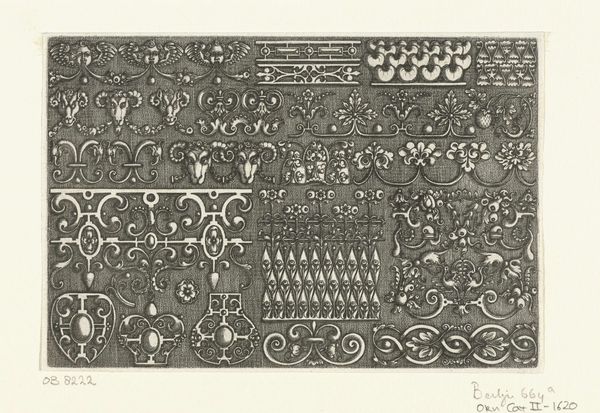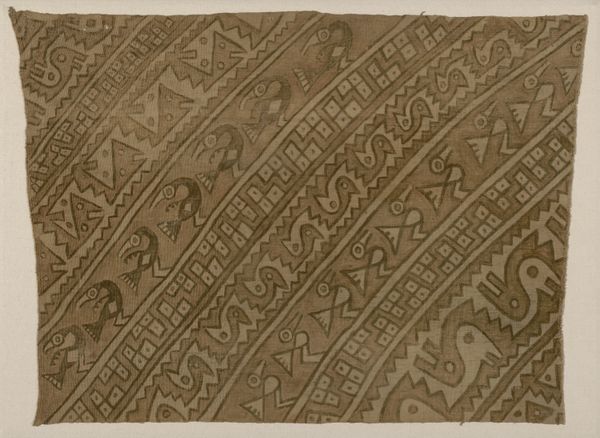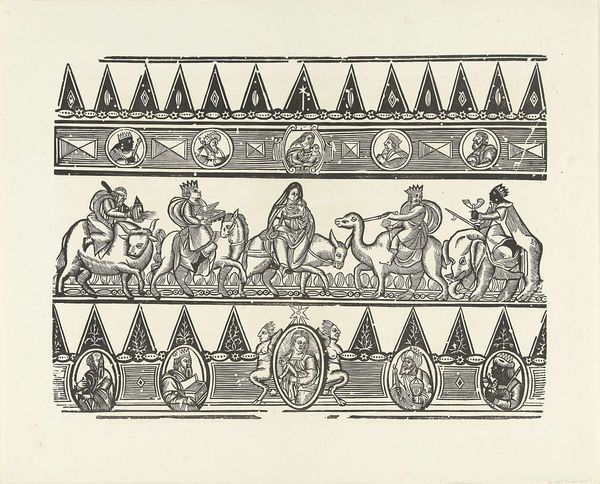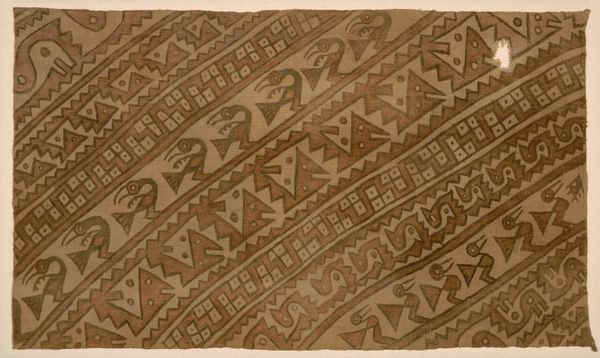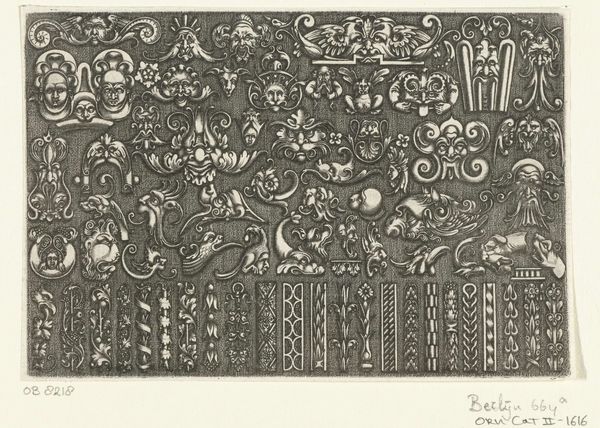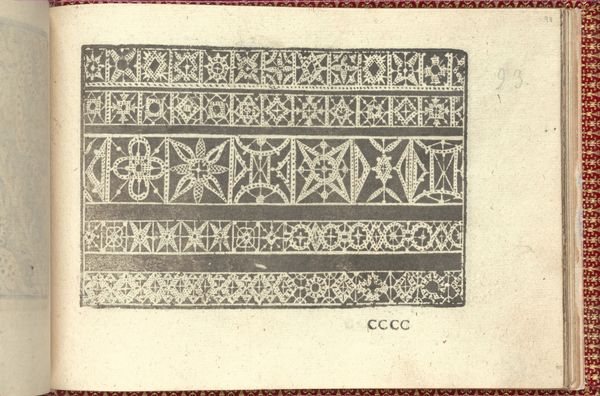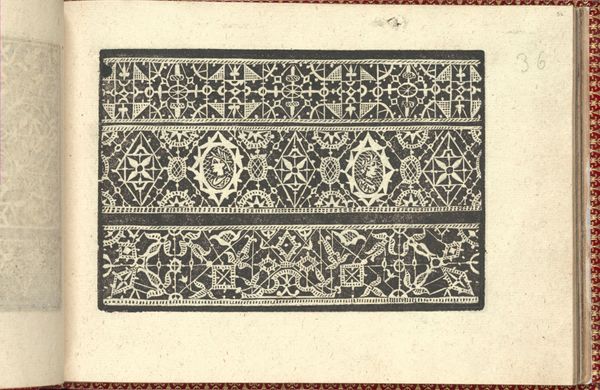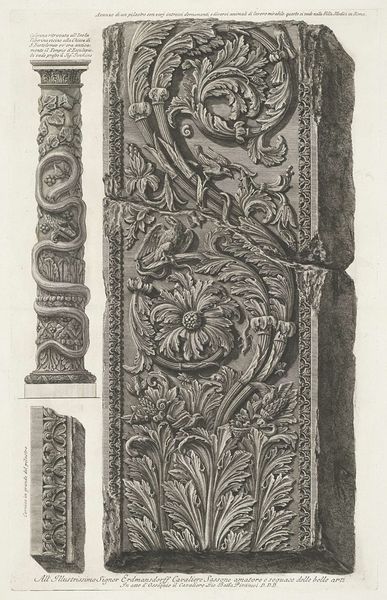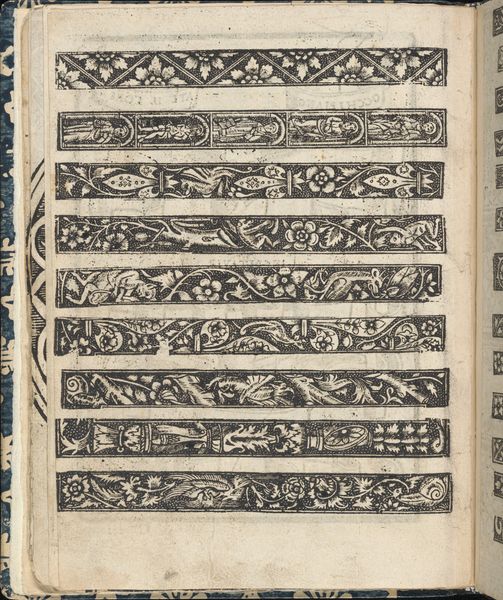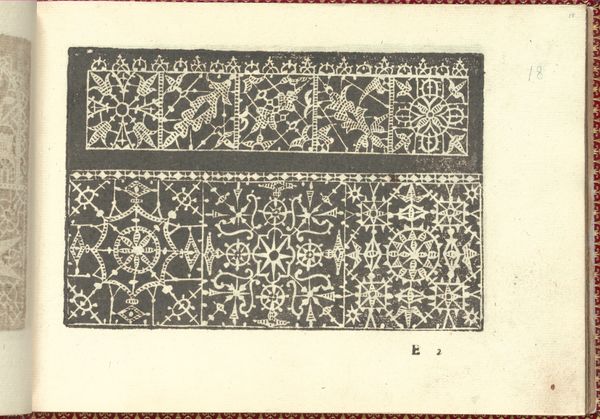
drawing, ornament, print, engraving
#
drawing
#
ornament
#
medieval
# print
#
lined art
#
pattern
#
old engraving style
#
geometric
#
line
#
pen work
#
pattern repetition
#
engraving
Dimensions: height 100 mm, width 149 mm
Copyright: Rijks Museum: Open Domain
Curator: What strikes me immediately is the meticulous detail; each row of ornament seems to breathe a different aesthetic life. Editor: Indeed. Here we have "Acht randen met ornamenten", or "Eight Borders with Ornaments," a drawing crafted before 1630 by an anonymous artist. It appears to be an engraving, probably intended as a source for artisans. The material process itself suggests reproduction, dissemination, and the democratisation of design. Curator: The symbolic language speaks volumes. See the constant visual motif? Images of abundance and natural beauty are cleverly integrated into this series of linear patterns. It echoes the decorative schemes popular throughout the medieval times, evoking a period when nature was still mysterious and wild to many. Editor: Quite. The medium of print, though, is key. This isn’t a singular, precious object, but a design template—meant to be copied, adapted, mass produced, impacting crafts such as textile manufacture, pottery decoration and maybe metalworking. I bet you can trace the influence to the furniture and interior embellishments of the wealthy, where highly trained specialist are employed in service. Curator: That's an astute observation. Each border has its distinct personality, if I may say so. We have rabbits with grapes in one band and formalized leaves alternating along another band. Look at how these familiar themes take on this rhythmic, codified representation. The band with rabbits perhaps carries symbolic fertility, while the palmettes represents a sign of triumph and even immortality? It evokes complex narratives encoded in repetitive elements. Editor: It also evokes how even with technological reproduction through printmaking, there remained a certain hierarchy. Access to design and these reproducible designs were uneven, limited to specific economic brackets. It's a study in distribution of decorative visual language through design samples for various types of commissioned crafting. Curator: So well put. Looking closely, you are left considering all of the objects it must have decorated—both secular and divine. Editor: A truly efficient process indeed, influencing taste in tangible ways, at a price.
Comments
No comments
Be the first to comment and join the conversation on the ultimate creative platform.

